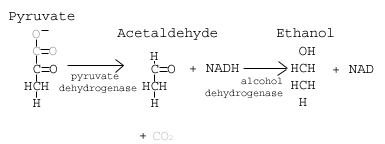Suggestions
Use up and down arrows to review and enter to select.Please wait while we process your payment
If you don't see it, please check your spam folder. Sometimes it can end up there.
If you don't see it, please check your spam folder. Sometimes it can end up there.
Please wait while we process your payment

By signing up you agree to our terms and privacy policy.
Don’t have an account? Subscribe now
Create Your Account
Sign up for your FREE 7-day trial
Already have an account? Log in
Your Email
Choose Your Plan
Individual
Group Discount
Save over 50% with a SparkNotes PLUS Annual Plan!
 payment page
payment page
Purchasing SparkNotes PLUS for a group?
Get Annual Plans at a discount when you buy 2 or more!
Price
$24.99 $18.74 /subscription + tax
Subtotal $37.48 + tax
Save 25% on 2-49 accounts
Save 30% on 50-99 accounts
Want 100 or more? Contact us for a customized plan.
 payment page
payment page
Your Plan
Payment Details
Payment Summary
SparkNotes Plus
You'll be billed after your free trial ends.
7-Day Free Trial
Not Applicable
Renews May 1, 2024 April 24, 2024
Discounts (applied to next billing)
DUE NOW
US $0.00
SNPLUSROCKS20 | 20% Discount
This is not a valid promo code.
Discount Code (one code per order)
SparkNotes PLUS Annual Plan - Group Discount
Qty: 00
SparkNotes Plus subscription is $4.99/month or $24.99/year as selected above. The free trial period is the first 7 days of your subscription. TO CANCEL YOUR SUBSCRIPTION AND AVOID BEING CHARGED, YOU MUST CANCEL BEFORE THE END OF THE FREE TRIAL PERIOD. You may cancel your subscription on your Subscription and Billing page or contact Customer Support at custserv@bn.com. Your subscription will continue automatically once the free trial period is over. Free trial is available to new customers only.
Choose Your Plan
For the next 7 days, you'll have access to awesome PLUS stuff like AP English test prep, No Fear Shakespeare translations and audio, a note-taking tool, personalized dashboard, & much more!
You’ve successfully purchased a group discount. Your group members can use the joining link below to redeem their group membership. You'll also receive an email with the link.
Members will be prompted to log in or create an account to redeem their group membership.
Thanks for creating a SparkNotes account! Continue to start your free trial.
We're sorry, we could not create your account. SparkNotes PLUS is not available in your country. See what countries we’re in.
There was an error creating your account. Please check your payment details and try again.
Please wait while we process your payment

Your PLUS subscription has expired
Please wait while we process your payment
Please wait while we process your payment

Glycolysis, as we have just described it, is an anaerobic process. None of its nine steps involve the use of oxygen. However, immediately upon finishing glycolysis, the cell must continue respiration in either an aerobic or anaerobic direction; this choice is made based on the circumstances of the particular cell. A cell that can perform aerobic respiration and which finds itself in the presence of oxygen will continue on to the aerobic citric acid cycle in the mitochondria. If a cell able to perform aerobic respiration is in a situation where there is no oxygen (such as muscles under extreme exertion), it will move into a type of anaerobic respiration called homolactic fermentation. Some cells such as yeast are unable to carry out aerobic respiration and will automatically move into a type of anaerobic respiration called alcoholic fermentation.

More specifically, the differences in aerobic and anaerobic respiration rest on the different very roles played by the NADH molecule produced in step 5 of glycolysis. In both aerobic and anaerobic respiration, the NADH molecule is part of the enzyme complex and must be restored to its NAD, oxidized state. If there are aerobic conditions, meaning oxygen is available, the NADH molecule can be transported to the mitochondria where it can be immediately converted back to NAD and plays a role in the electron transport chain. However, under anaerobic, oxygen-deficient conditions, NADH gets converted back to NAD through anaerobic mechanisms, whether homolactic or alcoholic fermentation.
Instead of being immediately reoxidized after glycolysis step 5 as it would in aerobic respiration, the NADH molecule remains in its reduced form until pyruvate has been formed at the end of glycolysis. The pyruvate product of glycolysis gets further acted upon under anaerobic conditions by the enzyme lactate dehydrogenase (LDH).

In this reaction, the hydrogen from the NADH molecule is transferred to the pyruvate molecule. This results in its carbon-oxygen double bond being reduced to a carbon-oxygen single bond with the addition of a hydrogen atom. The result is the molecule lactate. From the lactate product, lactic acid can be formed, which causes the muscle fatigue that accompanies strenuous workouts where oxygen becomes deficient.
There is another way that the NADH molecule can be re-oxidized. Anaerobic conditions in yeast convert pyruvate to carbon dioxide and ethanol. This occurs with the help of the enzyme pyruvate decarboxylase which removes a carbon dioxide molecule from the pyruvate to yield an acetaldehyde. The acetaldehyde is then reduced by the enzyme alcohol dehydrogenase which transfers the hydrogen from NADH to the acetaldehyde to yield NAD and ethanol. This enzyme is not found in humans.

As you can see, both of these anaerobic conditions leads to glycolytic products other than pyruvate. These different products are necessary because the NADH molecule must be reoxidized so that it can function in the next round of glycolysis of newly introduced glucose. If oxygen is not present to help oxidize it, other reactions, such as those of homolactic and alcoholic fermentation, must occur.
Please wait while we process your payment

